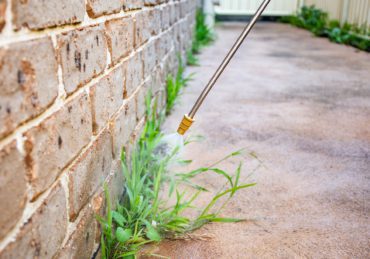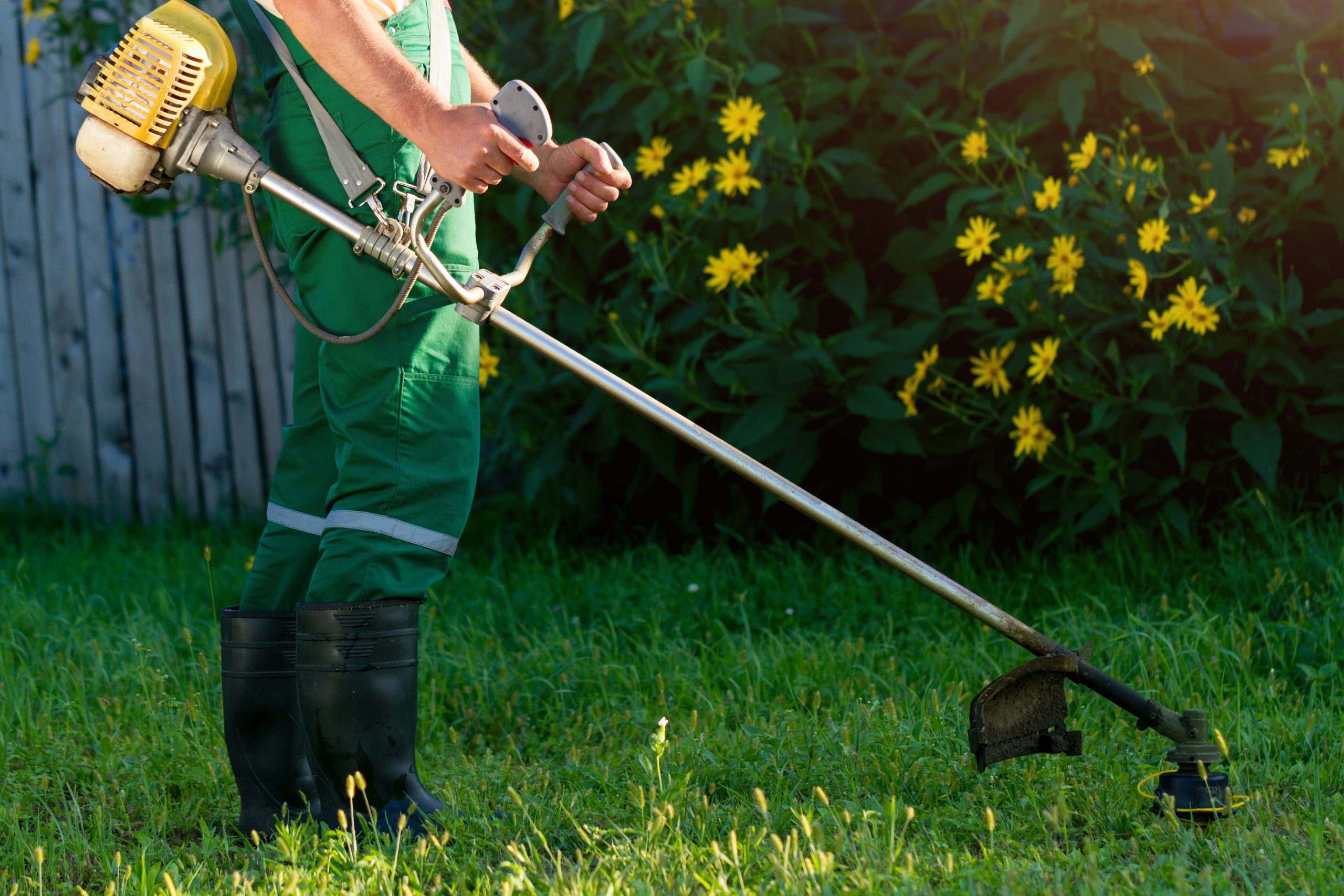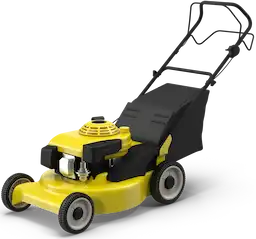To revive grass after winter, start by clearing winter debris to enhance sunlight exposure and air circulation. Next, remove thatch to promote water and nutrient penetration. Aerate the lawn to alleviate soil compaction, followed by overseeding to fill bare patches. Apply a balanced fertilizer to encourage growth, timing it for early spring when soil temperatures warm. Implement a consistent watering schedule, ensuring deep watering without over-saturating the soil. Finally, monitor for weeds and manage them promptly to prevent competition. This thorough approach sets the stage for a thriving lawn in the warmer months ahead.
Remove Salt and De-Icer
De-icers and salt can severely damage lawns, particularly in areas near sidewalks and driveways, resulting in unsightly brown patches and weakened grass. To effectively remove salt residue from your lawn, it is essential to understand the harmful effects of these substances and implement strategies to mitigate their impact. Taking proactive measures, such as using gypsum and monitoring for salt damage, will help maintain a healthy lawn as winter shifts to spring.
Why De-Icer and Salt are Harmful to Lawns
The use of de-icing salts can greatly harm lawns by increasing soil salinity, which inhibits the grass’s ability to absorb water and essential nutrients. High sodium concentrations from deicing products can disrupt nutrient uptake, leading to deficiencies that stress the grass. As a result, lawns may develop dead patches characterized by browning and die-off, making them unsightly. This accumulation of salt necessitates extra care to revive your lawn and restore its health. To mitigate these effects, thorough watering after the application of deicing salt is essential, as it helps leach excess salt away from the root zone. Furthermore, applying gypsum can assist in replacing sodium with calcium and sulfur, thereby improving soil structure and overall lawn health.
Remove Snow Mold
Snow mold can greatly impact the health of your lawn if left untreated, appearing as irregular gray patches on cool-season grasses. Identifying the presence of snow mold is essential for timely intervention, which involves raking the affected areas to improve airflow and facilitate drying. Following this initial treatment, implementing standard lawn care practices, such as fertilizing and overseeding, will support the revival of your grass.
Treating Snow Mold to Revive Your Grass
Raking the matted grass is essential for improving airflow and facilitating the drying process to effectively treat snow mold. This physical removal of affected areas helps reduce moisture and promotes recovery. After raking, a fertilizer application is vital; choose a high-quality product to provide the necessary nutrients for revitalizing grass growth. If bare patches remain, consider overseeding to encourage new grass development and restore the lawn’s thickness. Regular lawn care practices, such as aeration and proper watering, will further support recovery and minimize the risk of future snow mold outbreaks. By addressing snow mold promptly and effectively, you can guarantee a lush and healthy lawn as the growing season commences.
Schedule a Yard Clean Up
Scheduling a yard clean-up is essential for promoting a healthy lawn as spring approaches. Begin by clearing away winter debris, such as fallen branches and leaves, to improve drainage and air circulation. Moreover, this process allows for the identification of any bare or patchy spots that may require further attention and care.
Clear Winter Debris for Better Drainage
Clearing winter debris from your yard is essential for improving drainage and fostering a healthy environment for grass revival. Accumulated leaves, fallen branches, and other debris can greatly hinder grass growth by blocking sunlight and trapping moisture, leading to potential waterlogging. Regular debris removal not only enhances drainage but also reduces the risk of fungal infections and pest infestations, contributing to a healthier lawn overall. By raking leaves and eliminating clutter, you allow the grass to breathe and absorb nutrients more effectively. In addition, a clean yard facilitates a smooth mowing routine, ensuring no interruptions during the first mow of the season. Prioritizing these tasks early in spring sets the foundation for a vibrant and thriving lawn.
Checking for Bare or Patchy Spots
Inspecting your lawn for bare or patchy spots is essential to identify areas that require immediate attention for best recovery after winter. Begin by thoroughly checking for bare patches that may have developed due to prolonged snow and ice exposure. Schedule a yard clean-up to remove fallen branches, debris, and dead grass, as these can hinder growth and introduce fungal infections. Raking up dead grass improves airflow and prevents moisture buildup, facilitating recovery. For any bald areas found, consider overseeding with high-quality grass seed suitable for your climate to promote dense growth. Regularly monitor these spots and maintain a consistent watering schedule to support seed germination and establishment, ensuring effective lawn maintenance as the growing season progresses.
Remove Thatch
The removal of thatch is a critical step in revitalizing your lawn, as excessive buildup can hinder water and nutrient absorption. Understanding the best tools and methods for effective thatch removal is essential for promoting healthy grass growth. This process not only improves airflow but also enhances overall soil health, paving the way for a lush and resilient lawn.
Best Tools and Methods for Thatch Removal
Utilizing the appropriate tools and methods for thatch removal is essential to guarantee effective management of lawn health and promote ideal grass growth. The primary tools for thatch removal include a dethatching rake and a power dethatcher. A dethatching rake is effective for smaller areas, allowing for manual control, while a power dethatcher is recommended for larger lawns, efficiently removing thatch with minimal effort. Thatch buildup exceeding 0.5 inches can impede water, air, and nutrient penetration, making timely removal vital, ideally in early spring or fall when grass is actively growing. Furthermore, regular lawn maintenance practices such as aeration and overseeding can prevent excessive thatch accumulation, fostering a healthier and more resilient lawn.
Aerate and Overseed
Aeration is essential for alleviating soil compaction, allowing nutrients and water to penetrate deeper, which is vital for the health of grass roots. Following aeration, overseeding helps to introduce new grass varieties and fill in bare patches, fostering a denser and more resilient lawn. Together, these practices promote vigorous growth and recovery as the growing season approaches.
Overseeding for New Growth and Repair
Overseeding is an effective strategy to rejuvenate a lawn by introducing new grass varieties that can fill in bare patches and enhance overall density. The process begins with aerating the soil, which creates holes that improve drainage and guarantee ideal seed-to-soil contact, consequently increasing germination rates for new growth. It is essential to overseed after aeration in early spring, ideally when soil temperatures range from 50°F to 65°F. A recommended seeding rate of about 35 grams per square meter should be followed to achieve proper coverage without overcrowding the new grass. After overseeding, lightly rake the soil to improve soil contact and maintain consistent moisture, aiming for at least 1 inch of water per week until the grass is established.
Apply Fertilizer to Boost Growth
To effectively boost grass growth after winter, selecting the right type of fertilizer is vital, with options including quick-release and slow-release formulations. Timing the application is equally important; early spring is generally the best period to provide essential nutrients for recovery. Understanding these factors will guarantee peak results for a healthy lawn.
Choosing Between Quick-Release and Slow-Release Fertilizers
Selecting the right type of fertilizer is vital for effectively reviving grass after winter, with quick-release options providing immediate nutrients and slow-release varieties guaranteeing sustained growth. Quick-release fertilizers deliver a rapid nutrient boost, acting within six weeks, making them suitable for quick recovery after winter damage. Conversely, slow-release fertilizers offer a consistent feeding effect over an extended period, typically lasting up to four months, which supports gradual lawn growth. To optimize results, it is important to reflect on the specific nutrient needs of your lawn, which can be determined through soil testing. This tailored approach guarantees that the selected fertilizer effectively meets the demands of your grass, promoting robust recovery and enhancing overall lawn health.
Best Timing for Fertilizer Application
Applying fertilizer at the right time is vital for maximizing grass recovery and growth after winter dormancy. The ideal timing for fertilizer application occurs in early spring when soil temperatures consistently reach 55°F. This temperature threshold guarantees optimal nutrient absorption by grass roots, facilitating effective recovery. Utilizing a slow-release fertilizer during this period provides a balanced supply of nitrogen, phosphorus, and potassium, essential for promoting healthy grass growth. Furthermore, it minimizes the risk of rapid growth, which can stress the lawn. After applying the fertilizer, it is important to water the lawn thoroughly for at least one hour to help the nutrients penetrate the soil. Conducting a soil test beforehand can further enhance fertilization strategies for best results.
Mow the Lawn Carefully
Mowing the lawn carefully is essential for promoting healthy grass growth after winter. Start by adjusting the mower blade height to a higher setting in early spring, which protects the roots and minimizes stress on the grass. Implement a regular mowing schedule to encourage thicker growth, ensuring that no more than one-third of the grass height is removed at each session.
Adjusting Mower Blade Height for Early Spring
To guarantee the health of your lawn in early spring, adjust the mower blade height to the highest setting for the first few mowings, which helps protect grass roots while promoting robust growth. This practice minimizes stress on the lawn, allowing grass blades to establish strong roots and recover from winter dormancy. It is essential to avoid cutting more than one-third of the grass height at a time, ensuring that your lawn remains lush and vibrant. Furthermore, regularly sharpen your mower blades to achieve clean cuts, reducing the risk of disease and promoting a healthier lawn looking overall. As the season progresses and grass grows taller, gradually lower the mower settings to maintain ideal height for continued health.
Monitor and Manage Weeds Early
Monitoring and managing weeds early in the spring is essential for the recovery of your lawn. Familiarize yourself with common weeds that emerge during this season and consider using pre-emergent weed control to prevent them from taking hold. By addressing weed issues promptly, you can guarantee that your grass receives the nutrients and water it needs to thrive.
Common Weeds to Watch for in Early Spring
Early spring presents a crucial window for identifying and managing common weeds such as dandelions, crabgrass, and clover, which can jeopardize the health of a recovering lawn if not addressed promptly. After winter, these aggressive plants can create significant weed problems that compete for nutrients and space, hindering efforts to revive a lawn. Dandelions, known for their rapid seed production, can quickly proliferate if left unchecked. Crabgrass germinates in warm soil and can appear as soon as temperatures reach 55°F, necessitating early intervention. Clover, while beneficial for nitrogen fixation, can still compete with grass for essential resources. Regular monitoring and swift removal of these common weeds are critical to guarantee a robust and thriving lawn as the growing season approaches.
Using Pre-Emergent Weed Control
Implementing pre-emergent weed control is vital for establishing a robust lawn, as it effectively prevents the germination of invasive weed seeds before they can compete for important resources. To achieve ideal results, apply pre-emergent herbicides in early spring, ideally when soil temperatures reach around 55°F. Timing is essential; applying too late may lead to an increase in troublesome weeds like crabgrass. A general guideline is to apply these products two to four weeks before the last expected frost date in your region. After application, make sure you thoroughly water the lawn to activate the herbicide, creating a protective barrier in the soil. Regularly monitor your lawn for early signs of weeds to adapt your management strategy effectively.
Water Your Lawn Regularly but Carefully
Proper watering is essential for reviving your lawn after winter, as overwatering can hinder root development. Aim for deep watering sessions that promote healthy root systems, while being cautious not to saturate the soil too frequently. By monitoring moisture levels and adjusting your watering schedule based on weather conditions, you can guarantee your grass receives the hydration it needs without the risk of disease.
Avoid Overwatering in Early Spring
Regularly monitoring your lawn’s moisture levels is essential to avoid overwatering during the early spring months. To effectively revive your grass, be sure to water your lawn consistently, aiming for about one inch of moisture per week, including rainfall. This approach helps prevent weeds and encourages healthy growth without creating soggy conditions. Pay close attention to signs of overwatering, such as yellowing grass or a spongy feel underfoot, indicating that you may need to reduce your watering frequency. Using a soil moisture meter can also aid in determining when your lawn truly needs water. By managing your watering schedule carefully, you can address bare spots and promote a lush, thriving lawn throughout the growing season.





